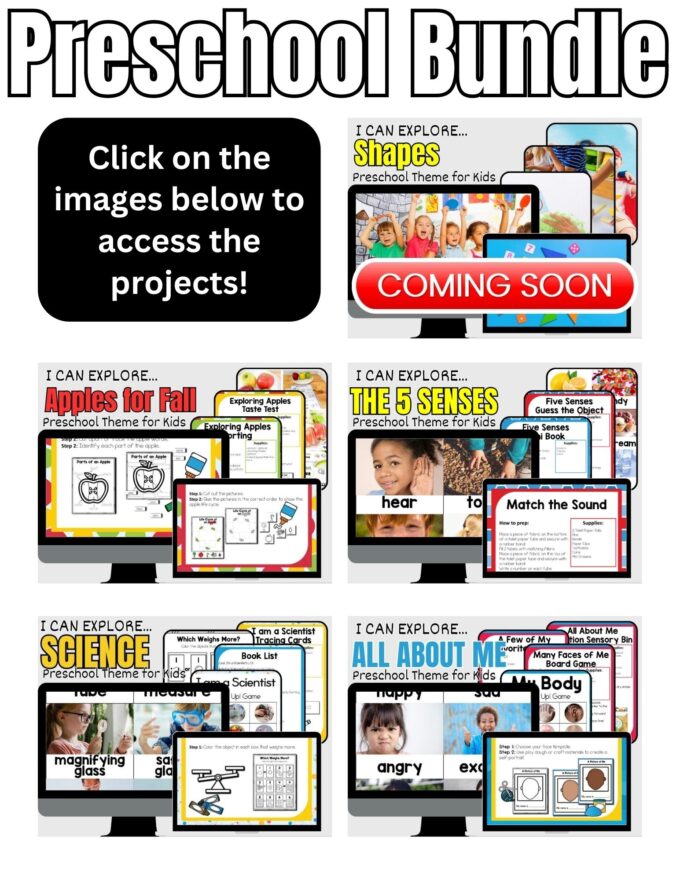Kids LOVE to send cars down ramps! The faster the better! But did you know that this favorite playtime activity is also an awesome science lesson for kids of all ages. Explore friction with just a few simple materials. Enjoy fun playful learning with our preschool science activities!
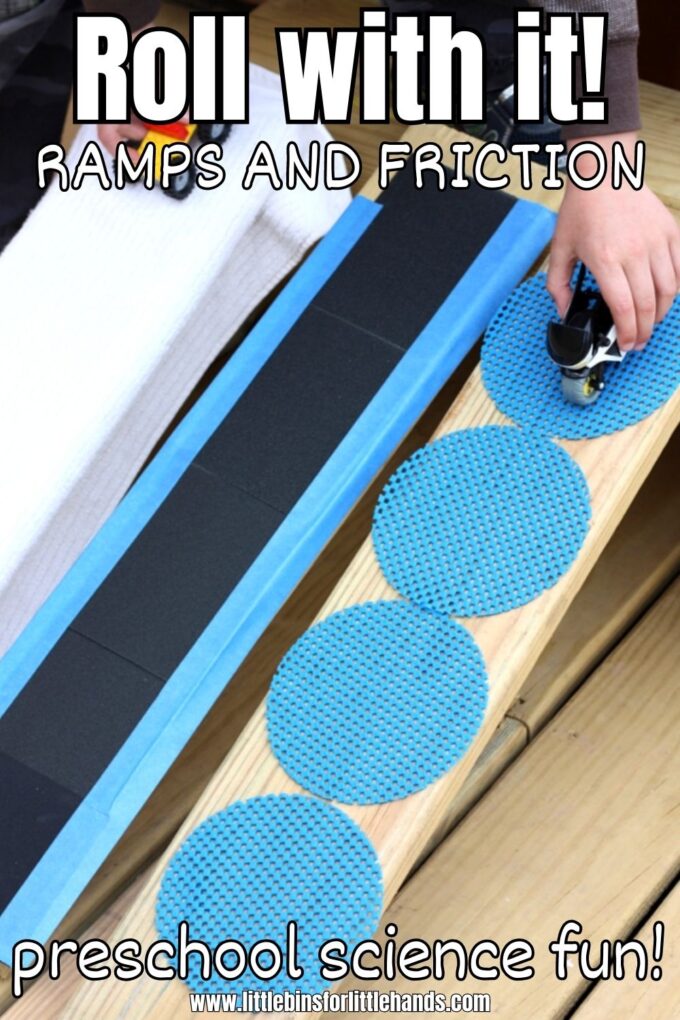
Explore Friction With Toy Cars
Simple physics activities like this toy car friction experiment are a wonderful way to get kids thinking, exploring, problem solving, and observing what is happening around them.
All you need are some simple ramps, textured materials and toy cars, and you are ready to go! Take the learning outdoors if the weather allows for easy play and learning.
Here is a fun way to introduce our preschoolers to the concept of friction in science. Extend the activity by applying the scientific method. Get kids to make predictions about which surface will be faster or slower, measure it with a stop watch and make conclusions.
There are many ways you can explore ramps, angles, slopes, and friction. Get creative with the supplies you have on hand and you can set up this easy science activity today!
Why Science Is Important For Preschoolers
Kids are curious and always looking to explore, discover, check things out, and experiment to find out why things do what they do, move like they move, or change as they change!
Indoors or outdoors, science is amazing! Let’s introduce our younger kiddos to science at a time in their development when they have so much curiosity about the world around them!
Science surrounds us, inside and out. Preschoolers love looking at things out with magnifying glasses, creating chemical reactions with kitchen ingredients, and of course exploring stored energy! Check out 50 awesome preschool science projects to get started!
There lots of easy science concepts that you can introduce kids to very early on! You might not even think about science when your toddler or preschooler pushes a car down a ramp, plays in front of the mirror, plays with a magnetic wand, or bounces balls over and over again.
See where I am going with this list! What else can you add if you stop to think about it? Science starts early, and you can be a part of that with setting up science at home with everyday materials.
Or you can bring easy science to a group of kids! We find a ton of value in cheap science activities and experiments. Check out our helpful science resources below.
Helpful Science Resources To Get Your Started
Here are a few resources that will help you introduce science more effectively to your kiddos or students and feel confident yourself when presenting materials. You’ll find helpful free printables throughout.
- Best Science Practices (as it relates to the scientific method)
- Science Vocabulary
- 8 Science Books for Kids
- All About Scientists
- Science Supplies List
- Science Tools for Kids
Tips For Exploring Ramps (Incline Planes)
Allow your kids to explore the bare ramp as they wish. They are going to be super excited to play that it is often best to let them explore the activity freely for a bit first!
You can also test out angles at this point. Change the position of the ramp and test out which ramp angles are faster or slower.
Which toy cars move faster? Heavier, lighter, longer, or shorter cars move at different speeds. This is a great way to get them thinking about the way things move!
Note: You may want to split this activity into two learning times since exploring the ramps or inclined planes is great fun all in itself and is still a simple physics lesson!
When the kids are ready, move on to your textured ramps. Let the kids feel the textures and describe them to you.
This is a great time to introduce the term friction if you would like! Read a little bit about friction below and keep it simple for young kids!
What Is Friction?
Young kids learn by exploring, observing, and figuring out the way things work by experimenting. Exploring friction with toy cars and ramps encourages all of the above.
Kids will learn that friction can be two surfaces rubbing against one another. We experience this when we rub our hands together when they are cold.
Friction is also the resistance an object meets when moving over another surface. The materials you attached to the ramps changed the surface of the ramp. The different cars will experience different amounts of friction when going down these ramps causing the cars to speed up or slow down.
Toy Car Friction Experiment
For older kiddos, learn more about friction with Floating Rice Friction Experiment and Screaming Balloon Experiment.
Supplies:
- Materials to make ramps. You can use cardboard or wood planks!
- Toy cars
- Variety of textured materials to create friction. There are so many ideas! We used a hand towel, sand paper, and rubber grippy mats. You could also use tin foil or parchment paper, a piece of rug, or even dirt.
- Tape to secure materials if necessary so they do not slip off the ramps.
- Stopwatch and measuring tape. These are optional but a fun way to extend the activity and encourage making predictions.
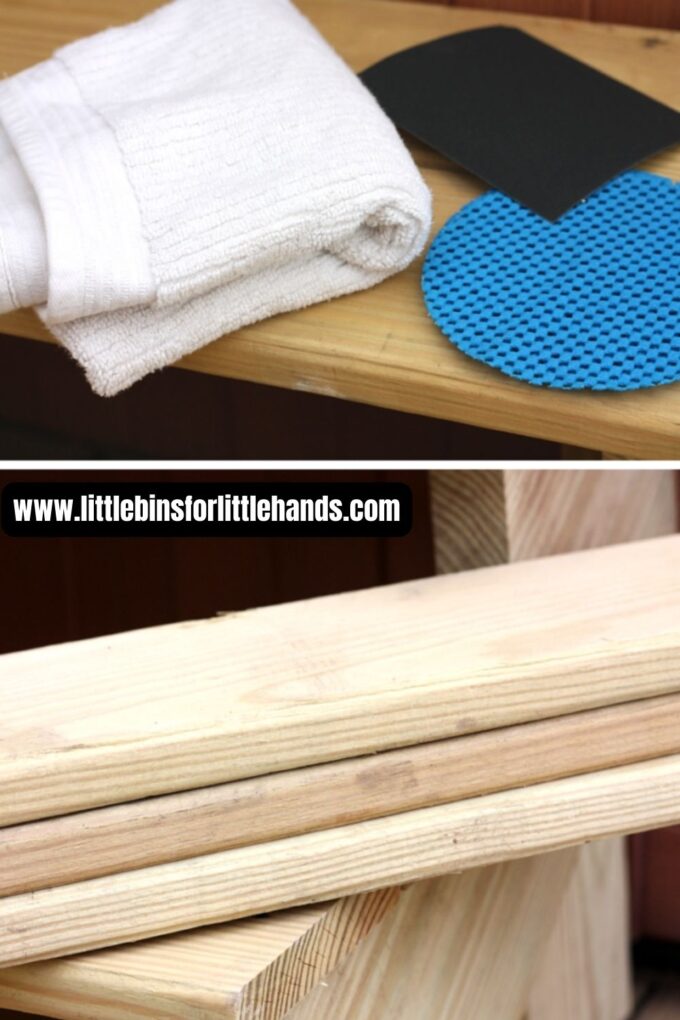
Instructions:
STEP 1. Choose the number and type of materials you want to test, and how many ramps you want to have available.
STEP 2. This is fun inside or outside! Leave one ramp free of materials as a test ramp. Secure your materials to the other ramps as needed.
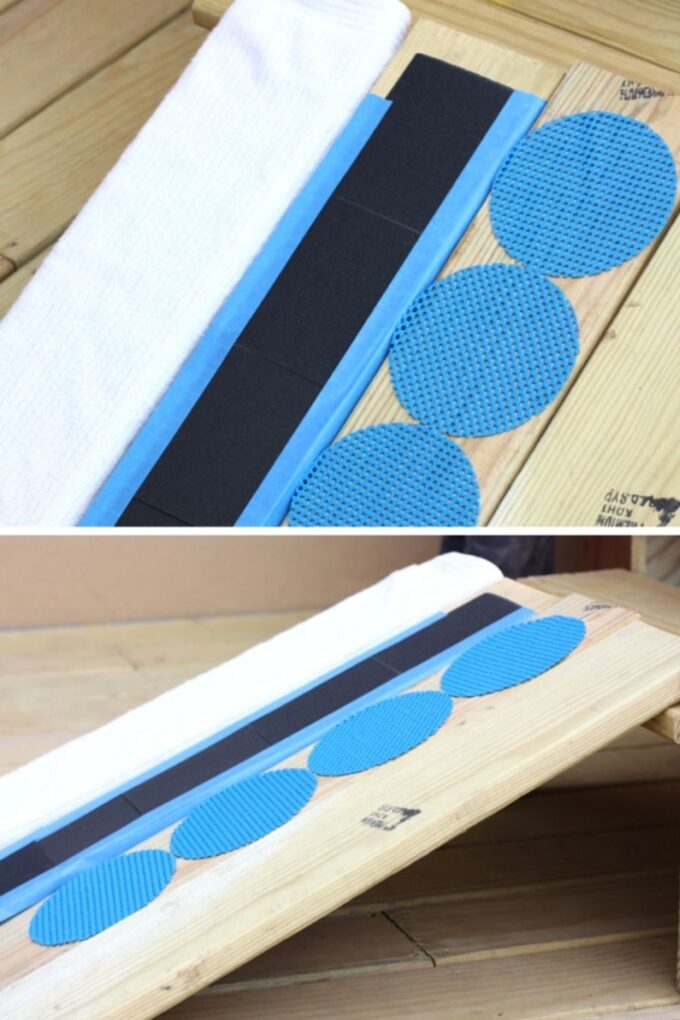
STEP 3. Set up your ramps on an incline from same height. We used stairs, but you can also stack books.
STEP 4. Gather your cars and kids!
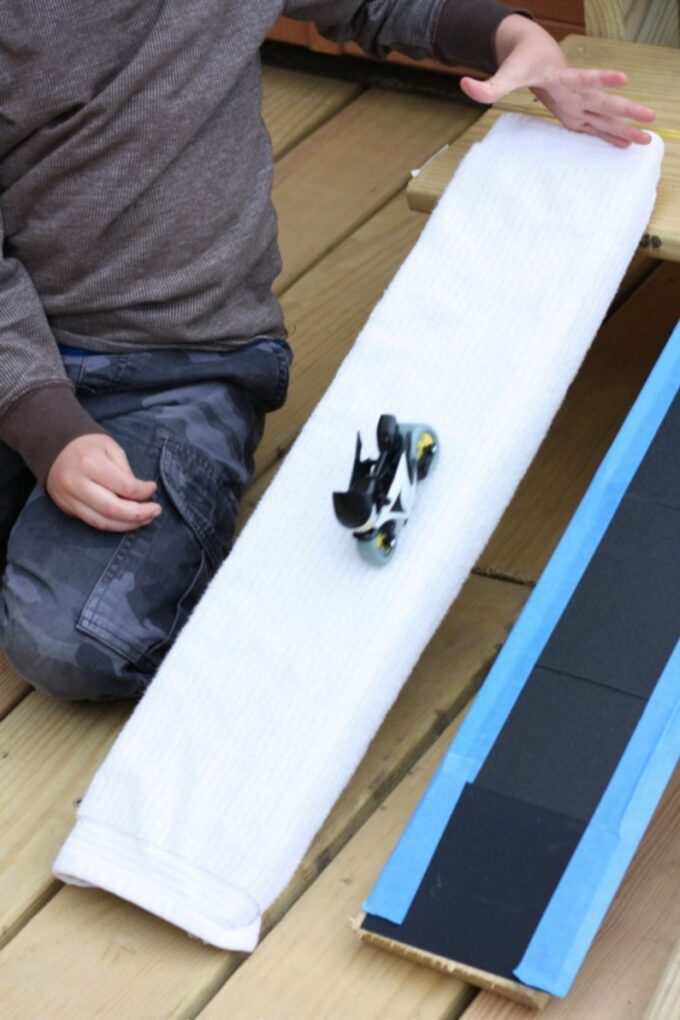
Ask lots of questions! Before they test out the cars, have the kids guess which texture might slow down the car or speed it up as it goes down the ramp. Make predictions on which cars will go faster or slower. Learn more about the scientific method for kids.
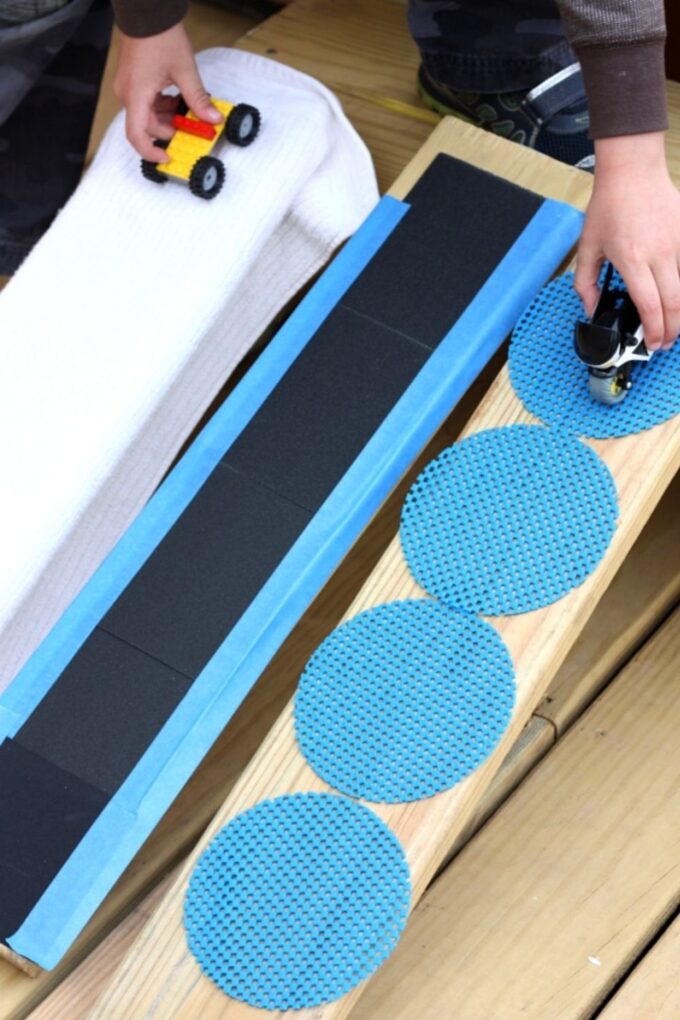
Let the kids race cars down the different ramps. If appropriate, you can use a measuring tape to see how far the cars travel off the ramp.

Which car goes the farthest? Which car is the slowest? Which car crashes, falls off the ramp, or doesn’t make it to the end?
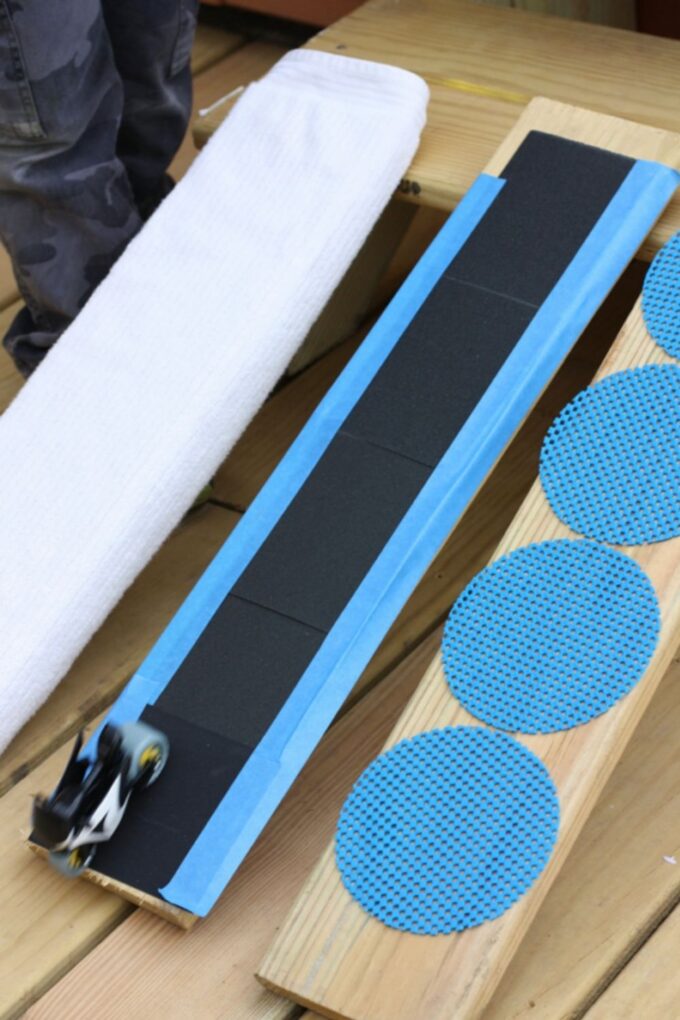
More Fun Pre-K Learning Activities
- Shadow Activities
- Exploring Volume
- What’s Magnetic and What’s Not
- Set Up A Nature Table
- Building Bridges
- 5 Senses Sensory Station
Printable Preschool Activities Pack
Get ready to explore this year with our growing Preschool STEM Bundle.
What’s Included:
There are 4 fun preschool themes to get you started. This is an ” I can explore” series!
Each unit contains approximately 15 activities, with instructions and templates as needed. Hands-on activities are provided to keep it fun and exciting. This includes sensory bins, experiments, games, and more! Easy supplies keep it low cost and book suggestions add the learning time.



